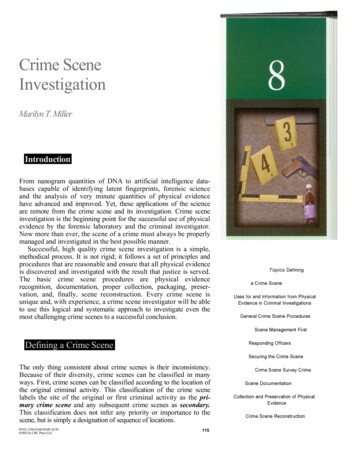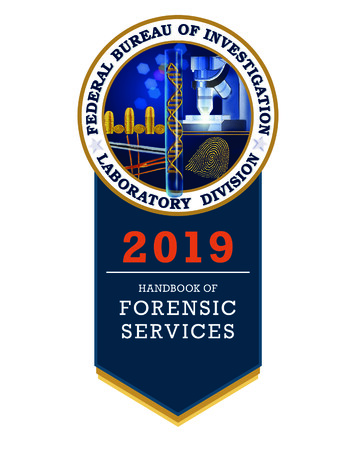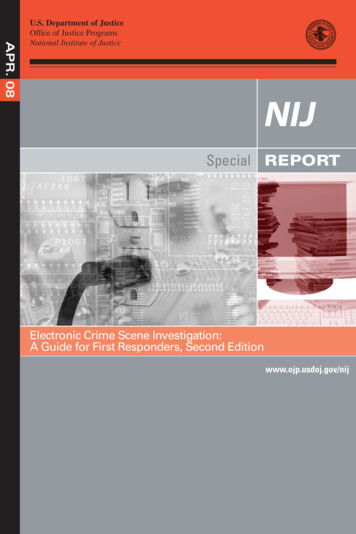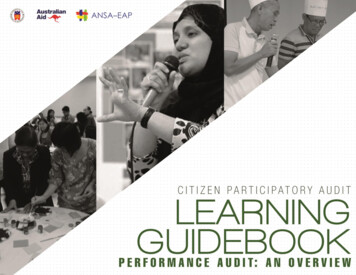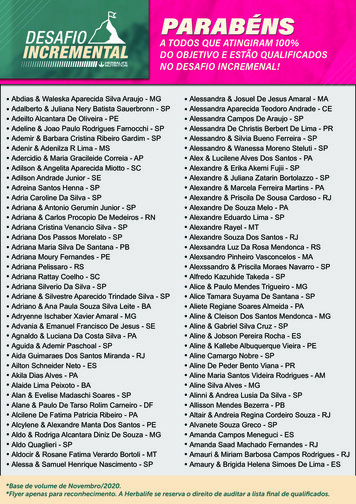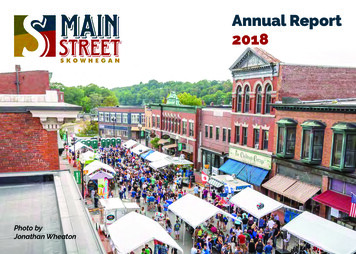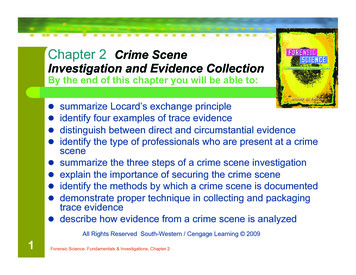
Transcription
Chapter 2 Crime SceneInvestigation and Evidence CollectionBy the end of this chapter you will be able to: summarize Locard’s exchange principleidentify four examples of trace evidencedistinguish between direct and circumstantial evidenceidentify the type of professionals who are present at a crimescenesummarize the three steps of a crime scene investigationexplain the importance of securing the crime sceneidentify the methods by which a crime scene is documenteddemonstrate proper technique in collecting and packagingtrace evidencedescribe how evidence from a crime scene is analyzedAll Rights Reserved South-Western / Cengage Learning 20091Forensic Science: Fundamentals & Investigations, Chapter 2
Dr. Edmond Locard, director of the world’s firstforensic lab (1910, Lyon, France), established theidea of the exchange principle; namely that:1. When a person comes in contact with anobject or another person, a cross-transfer ofphysical material can occur.2. Study of the material can determine the natureand duration of the transfer.2Forensic Science: Fundamentals & Investigations, Chapter 2
Statements of a witness in court would be3direct evidence. Indirect or circumstantial evidence, such asa fingerprint (physical evidence) or blood orhairs (biological evidence), would implysomething, and is called trace evidence.Forensic Science: Fundamentals & Investigations, Chapter 2
4Evidence taken from a crime scene. Direct orcircumstantial evidence? Physical or biologicalevidence? Class or individual evidence? Explainwhy this would be or would not be traceevidence.Forensic Science: Fundamentals & Investigations, Chapter 2
Who is at the crime scene? Police and possibly a district attorney. Crime scene investigators. Medical examiners. Detectives. Specialists.5Forensic Science: Fundamentals & Investigations, Chapter 2
Secure the scene.Separate the witnesses.Scan the scene.See to it that the crime scene examinersreceive overall and close up photos withand without measuring rulers.5. Sketch the scene.6. Search for evidence.7. Secure the collected evidence.1.2.3.4.6Forensic Science: Fundamentals & Investigations, Chapter 2
Packaging the evidenceCrease a clean paper and place the evidence inthe X position (as shown above).2. Fold in the left and right sides, and then fold inthe top and bottom.3. Put the bindle into a plastic or paper evidencebag affixing a seal over the opening.4. Write your name on the seal.1.7Forensic Science: Fundamentals & Investigations, Chapter 2
Chain of Custody1.2.3.8In order to present credible evidence in court, a chainof custody log is essential.A person bags the evidence, marks it for identification,seals it, and signs it across the sealed edge (above, left).It is signed over to a technician in a lab for analysis whoopens it, but not on the sealed edge.After analysis, the technician puts it back in the evidencebag, seals it in another bag, and signs the evidence log(above, right).Forensic Science: Fundamentals & Investigations, Chapter 2
The facts of the case are determinedwhen the forensic lab processes all thecollected evidence. The lab then sends the results to the leaddetective who aims to see how it all fitsinto the crime scenario.9Forensic Science: Fundamentals & Investigations, Chapter 2
The lab results can: Show how reliable are any witnessaccounts. Establish the identity of suspects orvictims. Show suspects to be innocent or linkthem with a scene or victim.10Forensic Science: Fundamentals & Investigations, Chapter 2
Crime scene reconstruction involves:––––11forming a hypothesisof the sequence of eventsfrom before the crime was committedthrough its commission.Forensic Science: Fundamentals & Investigations, Chapter 2
When the lab results do not match up with thetestimony of witnesses, it can mean the crimewas staged; common examples include: Staging a fire—to cover bankruptcy. Staging a suicide—to cover a murder. Staging a burglary—to collect insurancemoney.12Forensic Science: Fundamentals & Investigations, Chapter 2
To help determine whether a crime scenewas staged, consider: Whether the type of wound found on the13victim matches the weapon employed. Whether the wound could have been easilyself-inflicted. The mood and actions of the victim beforethe event. The mood and actions of a suspect beforethe event.Forensic Science: Fundamentals & Investigations, Chapter 2
Locard’s exchange principle: contact between14people and objects can transfer material that candetermine the nature and duration of the transfer. Evidence can be direct or indirect (physical orbiological traces). A crime scene investigation team consists ofpolice, detectives, crime scene investigators,medical investigators, and specialists. The investigation consists of recognizing,documenting, and collecting evidence.Forensic Science: Fundamentals & Investigations, Chapter 2
First responding officers identify the extent of thecrime scene, secure it, and segregate witnesses. Crime scene investigators document the crimescene. Evidence must be collected, packaged, andlabeled. The evidence then is analyzed and interpreted tofit the crime scenario.15Forensic Science: Fundamentals & Investigations, Chapter 2
7 Forensic Science: Fundamentals & Investigations, Chapter 2 Packaging the evidence 1. Crease a clean paper and place the evidence in the X position (as shown above). 2. Fold in the left and right sides, and then fold in the top and bottom. 3. Put the bindle into a plastic or paper evidence bag affixing a seal over the opening. 4.


